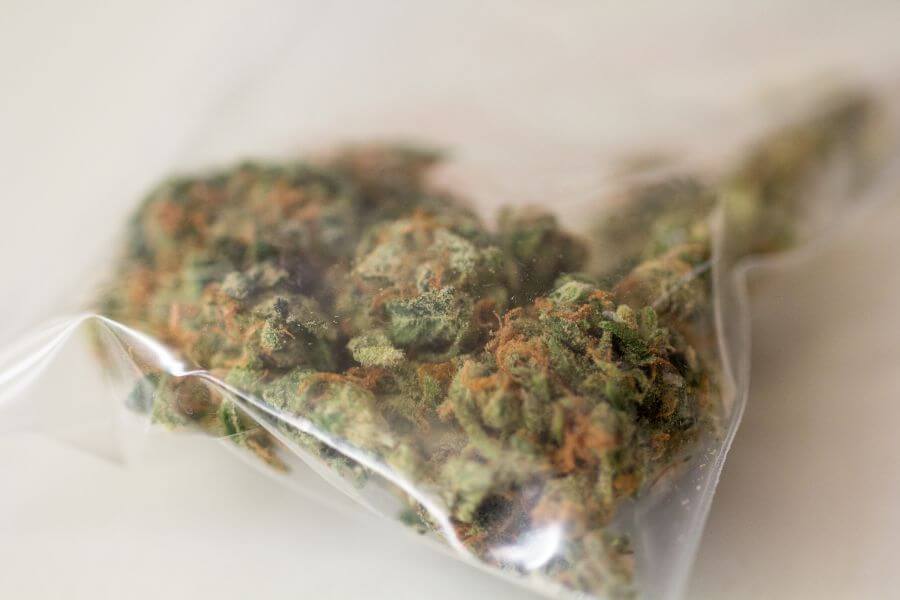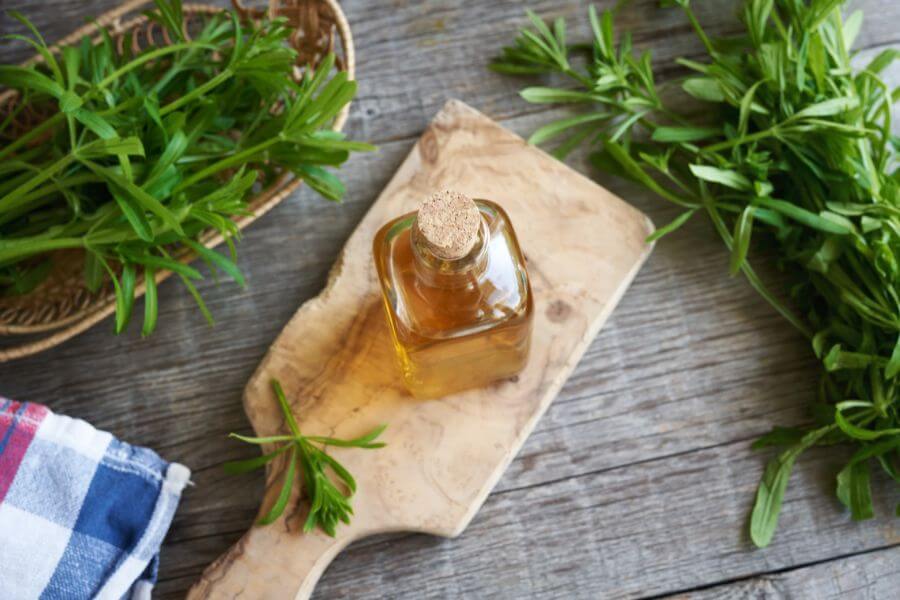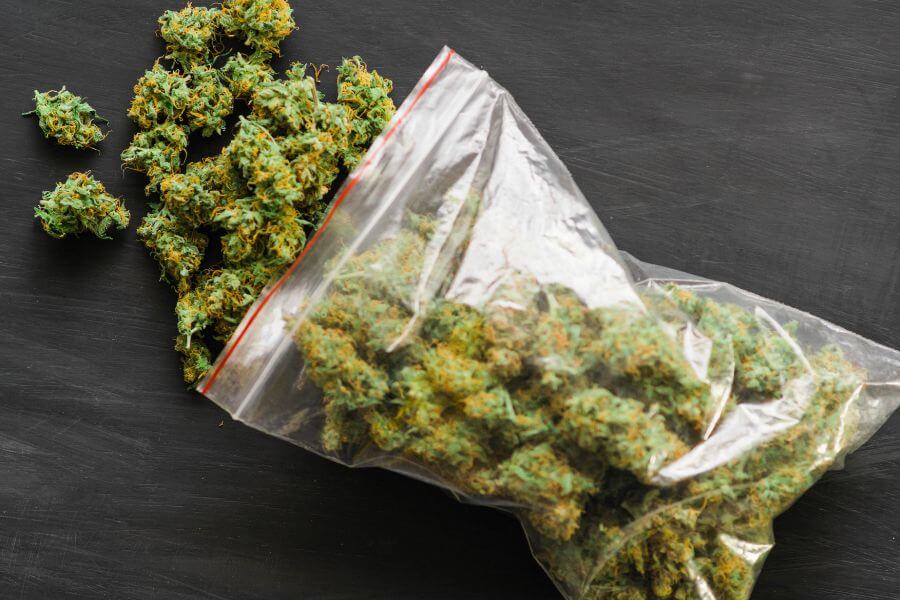Key Takeaways
- Key environmental factors like light, air, moisture, and temperature significantly affect cannabis degradation, impacting its potency, aroma, and quality over time.
- Proper storage, including using airtight containers and maintaining controlled environments, is essential to extending the shelf life of fresh weed and preserving its effectiveness.
- Aged cannabis, despite its reduced potency, can still be effectively used in various applications, such as in cooking and in making topical products, ensuring no part of your purchase goes to waste.
Cannabis has become a staple in various cultures worldwide, revered for its recreational and medicinal benefits. As with any herb, the effectiveness and safety of cannabis depend on its freshness and preservation.
While it doesn’t spoil in the conventional sense, cannabis does degrade over time. This raises the critical question: Does weed go bad?
Both novice enthusiasts and seasoned connoisseurs may wonder about the longevity of their stash, but understanding the nuances of cannabis degradation is crucial.
As we explore the world of cannabis preservation, adopting a knowledgeable perspective will help ensure that each use is effective and beneficial, keeping experiences enjoyable.
Understanding Cannabis Degradation
How Weed Ages

Cannabis degradation is a subtle yet critical process influenced by various environmental factors that can diminish its quality and efficacy. When we say that weed “goes bad,” we refer to the gradual loss of potency, aroma, and flavor rather than direct spoilage like perishable food.
Key elements such as light, air, moisture, and temperature play pivotal roles in this degradation. Light accelerates the breakdown of cannabinoids, the chemical compounds like THC that deliver cannabis’s effects.
Air exposure can lead to oxidation, further reducing potency and altering the plant’s chemical makeup. Moisture, conversely, can encourage mold growth, while excessive temperature fluctuations can dry out the buds, leading to a harsh and unpleasant consumption experience.
Understanding these factors can help maintain the integrity of cannabis, ensuring each session is as satisfying as intended.
The Science Behind Degradation
The science behind cannabis degradation focuses on the chemical changes affecting compounds like THC and terpenes which helps us figure out how long is weed good for. THC, the primary psychoactive component, breaks down into less potent compounds such as CBN when exposed to oxygen and UV light.
This not only reduces its psychoactive effects but also its therapeutic benefits. Terpenes, responsible for the distinct flavors and aromas of cannabis strains, are also vulnerable to environmental factors.
As terpenes degrade, the sensory richness and complexity of the cannabis experience diminish, potentially altering its therapeutic effects. Understanding these chemical processes underscores the importance of proper storage to maintain cannabis’s potency and benefits.
Signs of Weed Going Bad

There are a few telltale signs that your cannabis may be past its prime. These include:
Visual and Textural Changes
As cannabis ages, it exhibits clear visual and textural changes, signaling a decline in quality. Old weed typically appears faded, losing the vibrant greens and rich purples of fresh buds, and becomes dry and crumbly.
These changes indicate that the essential oils, primarily terpenes and cannabinoids, have diminished, leading to reduced potency and a less enjoyable experience.
These alterations not only affect the visual and tactile appeal but also signal a decrease in the therapeutic and psychoactive effects, underscoring the importance of proper storage to maintain cannabis quality.
Aroma and Flavor
The degradation of cannabis is also evident in its aroma and flavor, which are crucial indicators of its condition. A loss of smell often precedes a decline in potency as the aromatic terpenes degrade alongside the cannabinoids that contribute to cannabis’s effects.
Similarly, when smoked or vaped, old cannabis loses not only taste but is less flavorful and can also carry a harsher, more acrid smoke compared to its fresher counterpart.
These sensory changes not only diminish the overall enjoyment but also reflect a reduction in the therapeutic qualities of the cannabis, making it essential to monitor these aspects to ensure optimal use and effectiveness.
Effects on Potency
Degradation of cannabis significantly impacts its potency, asking the question: does weed lose potency over time? Indeed, as THC degrades, both the intensity and quality of its psychoactive effects diminish.
This leads to a less satisfying experience for recreational users and a decrease in efficacy for medical users who rely on specific dosages for therapeutic benefits.
Using cannabis that has lost potency can have significant medical implications. Patients who use cannabis for treatment might find themselves needing to consume more to achieve the desired effects, complicating dosage control and potentially increasing side effects.
This underscores the importance of proper storage and timely usage to maintain the effectiveness of cannabis for both recreational enjoyment and medical relief.
Health Risks Associated with Old Weed

The Danger of Mold and Mildew
The health risks associated with old weed are significantly heightened by the presence of mold and mildew, which can develop under suboptimal storage conditions. Mold on cannabis typically arises from excess moisture, which creates an ideal environment for fungal growth.
This is not just a superficial concern; inhaling mold spores from contaminated cannabis can lead to serious respiratory issues and other health problems, especially for individuals with compromised immune systems.
Studies indicate that about 20% of indoor cannabis plants are affected by mold to some degree [1]. Identifying moldy weed is crucial: look for visible signs like white powdery mildew or fuzzy gray or black spots (its important not to smoke moldy weed).
Cannabis users should inspect their stash regularly to ensure it remains free of mold, safeguarding their health and maintaining the quality of their product.
Other Possible Contaminants
In addition to mold and mildew, old weed can harbor other microbial contaminants that pose serious health risks, particularly to individuals with compromised immune systems.
Bacteria and other pathogens can proliferate in improperly stored cannabis, especially in humid environments that lack proper air circulation. These microbes may not always be visible to the naked eye, making them even more insidious.
Exposure to these pathogens can lead to infections and other severe health complications for those with weakened immune defenses.
This underscores the importance of meticulous cannabis storage and regular checks to ensure that it remains free from harmful contaminants, safeguarding both the purity and safety of the product.
Best Practices for Storing Weed
Proper Storage Techniques
To ensure the longevity and efficacy of cannabis, adhering to best practices for storage is essential. Proper storage techniques can significantly prolong the shelf life of weed by maintaining its potency, aroma, and safety.
The ideal conditions to store weed involve keeping it in a cool, dry, and dark place to prevent the degradation of cannabinoids and terpenes and inhibit mold growth and other contaminants.
An airtight container made of glass (such as glass jars) or metal is highly recommended because it does not allow air exchange, which can lead to oxidation. Additionally, using containers that block out harmful UV light can further protect the cannabis from quality degradation (be sure to avoid direct sunlight).
By controlling these environmental factors, users can maintain the quality and effectiveness of their cannabis over time, ensuring a superior experience upon use.
Humidity and Temperature Control
Maintaining the right humidity and temperature is crucial in preserving the quality of cannabis and preventing its degradation. Humidity packs, which help maintain an optimal environment within storage containers, can efficiently control humidity.
These packs either release or absorb moisture to keep the relative humidity around 55-62%, which is ideal for cannabis preservation. This level prevents the buds from becoming too dry, which can lead to a harsh smoke, and from being too moist, which can encourage mold growth.
Temperature control is equally important; cannabis should be stored in a cool environment, typically below 70 degrees Fahrenheit (21 degrees Celsius), to slow the rate of cannabinoid degradation and prevent the volatilization of terpenes.
Fluctuations in temperature can also compromise the integrity of the cannabis, making stable, cool conditions vital. Together, effective humidity and temperature management can dramatically extend the shelf life of cannabis, ensuring it remains potent and safe for consumption.
What to Do with Old Weed
Can You Still Use Old Weed?
While aged weed may not provide the same potency or sensory experience as when it was fresh, it can still be used in several ways, assuming it has been stored properly and shows no signs of mold or unpleasant odors.
Old weed that has lost its robust flavor and potency is often still suitable for use in edibles, where it can be decarboxylated to activate remaining cannabinoids, thus making a useful ingredient in cooking.
Similarly, less potent strains can be excellent for making tinctures or topicals, where the psychoactive effects are less critical, but the therapeutic benefits remain valuable.
It’s safe to use aged weed for these purposes as long as it has been stored correctly and careful inspection confirms that it is free from mold and other contaminants. This approach allows users to maximize the utility of their cannabis, even when it’s past its prime.
Creative Uses for Degraded Cannabis
Degraded cannabis need not go to waste, as there are inventive ways to repurpose it, preserving its remaining potency and flavor. One creative use is in the preparation of cannabutter or cannabis-infused oils, which can extract any residual cannabinoids from older buds.
This base ingredient can be used in various edible recipes, from baked goods like brownies and cookies to more savory dishes like pasta sauces or salad dressings. Additionally, older weed can be ground into a fine powder and added to tea blends or herbal mixtures for a milder, controlled effect.
For those looking to salvage every last bit of flavor and potency, incorporating aged cannabis into lotions or balms for topical application can also be effective.
These methods not only extend the usefulness of cannabis but also offer a gentle entry point for those new to cannabis edibles or topical products.
Conclusion
In conclusion, cannabis does not spoil like traditional food but does degrade over time, impacting its potency, aroma, and quality.
We’ve discussed how environmental factors like light, air, moisture, and temperature contribute to this process and the importance of recognizing signs of aging, such as changes in appearance, texture, smell, and taste.
Proper storage is crucial for extending shelf life and maintaining efficacy, emphasizing airtight containers and controlled environments. Even less potent, aged cannabis has useful applications, from cooking to topical products.
Understanding how to manage the shelf life of cannabis ensures that each use is safe and enjoyable, maximizing the plant’s value and enhancing consumer experiences. This knowledge empowers users to make informed choices, ensuring lasting benefits from their cannabis.
Sources –
